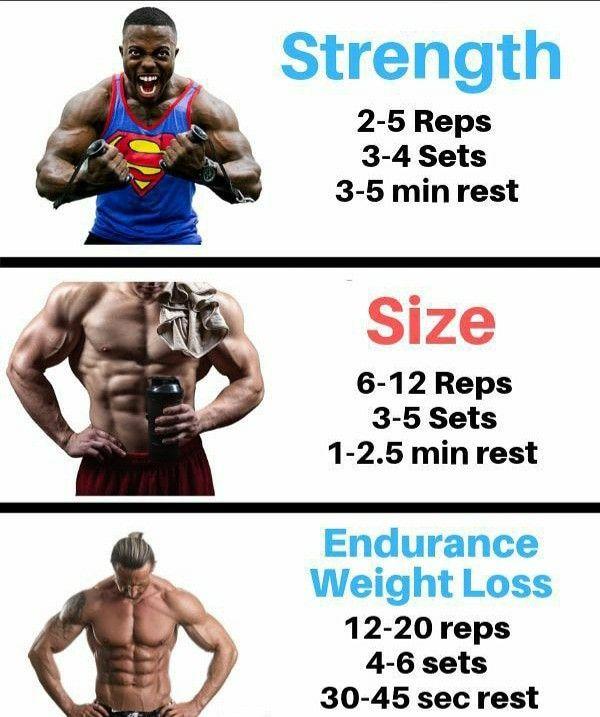When it comes to achieving lasting fitness, building strength endurance is a game-changer. Unlike pure strength training, which focuses on maximal power, strength endurance emphasizes the ability of your muscles to perform sustained efforts over time. this blend of stamina and strength is essential not only for athletes but for anyone looking to improve overall fitness, enhance daily performance, and reduce injury risk. In this article,we’ll explore key tips and strategies to help you develop strength endurance effectively,ensuring you build a resilient,long-lasting foundation for your fitness journey.
Table of Contents
- Understanding Strength Endurance and Its Role in Fitness
- Effective Training Techniques to Boost muscular Endurance
- Nutrition Strategies to Support Long-Lasting Performance
- Recovery and Rest Practices for Sustained Strength Gains
- Final Thoughts
Understanding Strength Endurance and Its Role in fitness
Strength endurance is a critical component of overall fitness, blending muscular strength with the ability to sustain repeated contractions over time. Unlike pure strength, which focuses on the maximum force a muscle can exert, strength endurance emphasizes maintaining performance across multiple reps or prolonged activity. This quality is essential not only for athletes and fitness enthusiasts but also for everyday activities that require sustained muscular effort without premature fatigue.
Developing this form of endurance involves training strategies that challenge both muscle fibers and the cardiovascular system simultaneously. Key factors that enhance strength endurance include:
- Using moderate weights with higher repetitions (typically 12-20 reps per set)
- Minimizing rest periods to improve muscular recovery and stamina
- Incorporating circuit-style workouts that target multiple muscle groups
- Focusing on consistent, progressive overload to build resilience
Mastering these elements not only boosts your ability to perform longer but also improves muscle tone and metabolic health, making strength endurance a vital aspect of holistic fitness.
Effective Training Techniques to Boost Muscular Endurance
To effectively enhance muscular endurance, incorporating high-repetition, low-resistance exercises is essential.This approach conditions the muscles to sustain prolonged activity without fatiguing quickly.Combining compound movements such as squats, lunges, and push-ups with extended sets (15-20+ reps) increases local muscle stamina, improving overall performance. Moreover,integrating circuit training not only targets multiple muscle groups but also challenges cardiovascular endurance,providing a dual benefit that maximizes workout efficiency.
Consistency and progression are vital components in boosting endurance. Gradually increasing the volume, whether by adding more repetitions or reducing rest intervals, ensures continuous muscular adaptation. Implementing the following strategies can accelerate gains:
- Time under tension: Slow down the eccentric phase of each movement to increase muscle engagement.
- Active recovery: Opt for low-intensity movements during rest periods to maintain blood flow and reduce fatigue.
- Variety in training: Alternate between resistance bands,free weights,and bodyweight exercises to prevent plateaus.
These techniques not only foster muscular endurance but build a resilient foundation for long-term fitness success.
Nutrition Strategies to Support Long-Lasting Performance
Optimizing your diet to enhance endurance involves more than just eating “clean.” Focus on complex carbohydrates to sustain energy release over time—think whole grains, sweet potatoes, and legumes. Pair these with moderate amounts of high-quality proteins such as lean meats, dairy, or plant-based sources to support muscle repair and recovery. Don’t overlook healthy fats from avocados, nuts, and olive oil, which play a crucial role in hormone regulation and prolonged energy. Hydration is equally essential; adequate fluid intake ensures efficient nutrient transport and prevents early onset fatigue during extended workouts.
- Pre-Workout: Consume a balanced meal 1–2 hours before training loaded with carbs and moderate protein to fuel performance.
- During Exercise: For sessions over 60 minutes, take in easily digestible carbs like sports drinks or gels to maintain glucose levels.
- Post-Workout: Prioritize speedy protein and carb sources within 30 minutes to accelerate muscle recovery and glycogen replenishment.
Recovery and Rest Practices for Sustained Strength Gains
Maximizing strength endurance is not solely about pushing harder during workouts; it’s equally about how you manage downtime. Strategic recovery allows your muscles to repair, adapt, and grow stronger. Incorporating rest days into your weekly routine prevents overtraining and reduces injury risk, creating a enduring path to continuous improvement. Emphasizing quality sleep—aiming for 7-9 hours per night—also plays a crucial role, as this is when the body releases growth hormone and undergoes essential muscle repair processes.
Beyond basic rest, active recovery techniques can accelerate your progress by increasing blood flow and reducing muscle soreness. Consider integrating practices such as:
- Foam rolling: Helps alleviate tightness and improve tissue mobility.
- Light cardio sessions: Promote circulation without taxing your muscles.
- stretching and mobility work: Enhances versatility and range of motion.
Combining these recovery strategies ensures that you maintain high training intensity over time, facilitating consistent strength endurance gains without burnout.
Final Thoughts
Building strength endurance is a journey that requires consistency, patience, and smart training strategies. By incorporating progressive overload, balancing strength with cardiovascular work, and prioritizing recovery, you set yourself up for long-lasting fitness gains that go beyond the gym. Remember, it’s not just about lifting heavier or going longer—it’s about developing a resilient body that performs well day after day. keep these key tips in mind, stay committed, and watch your strength endurance transform your overall health and performance for the better. Here’s to building strength that lasts!

